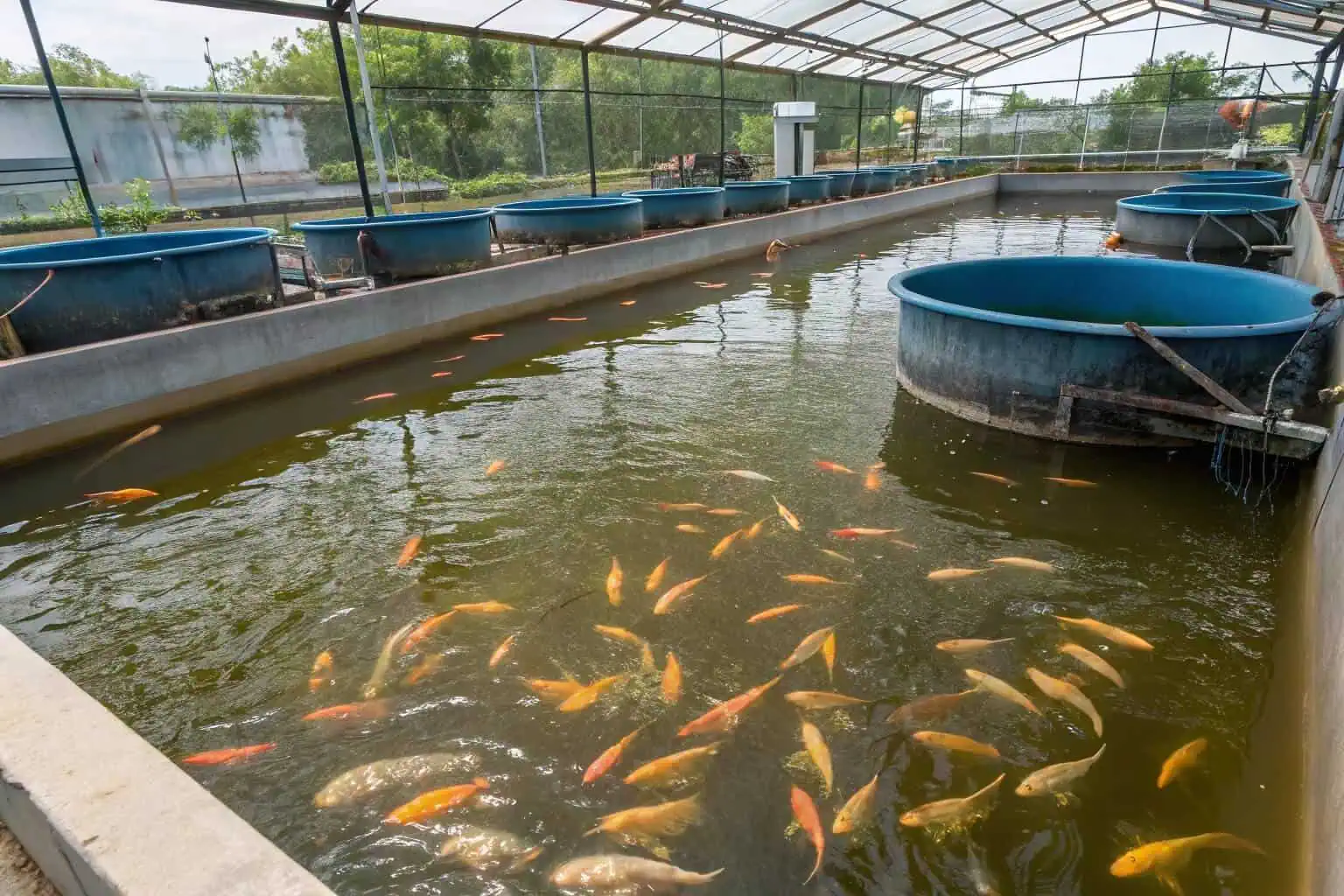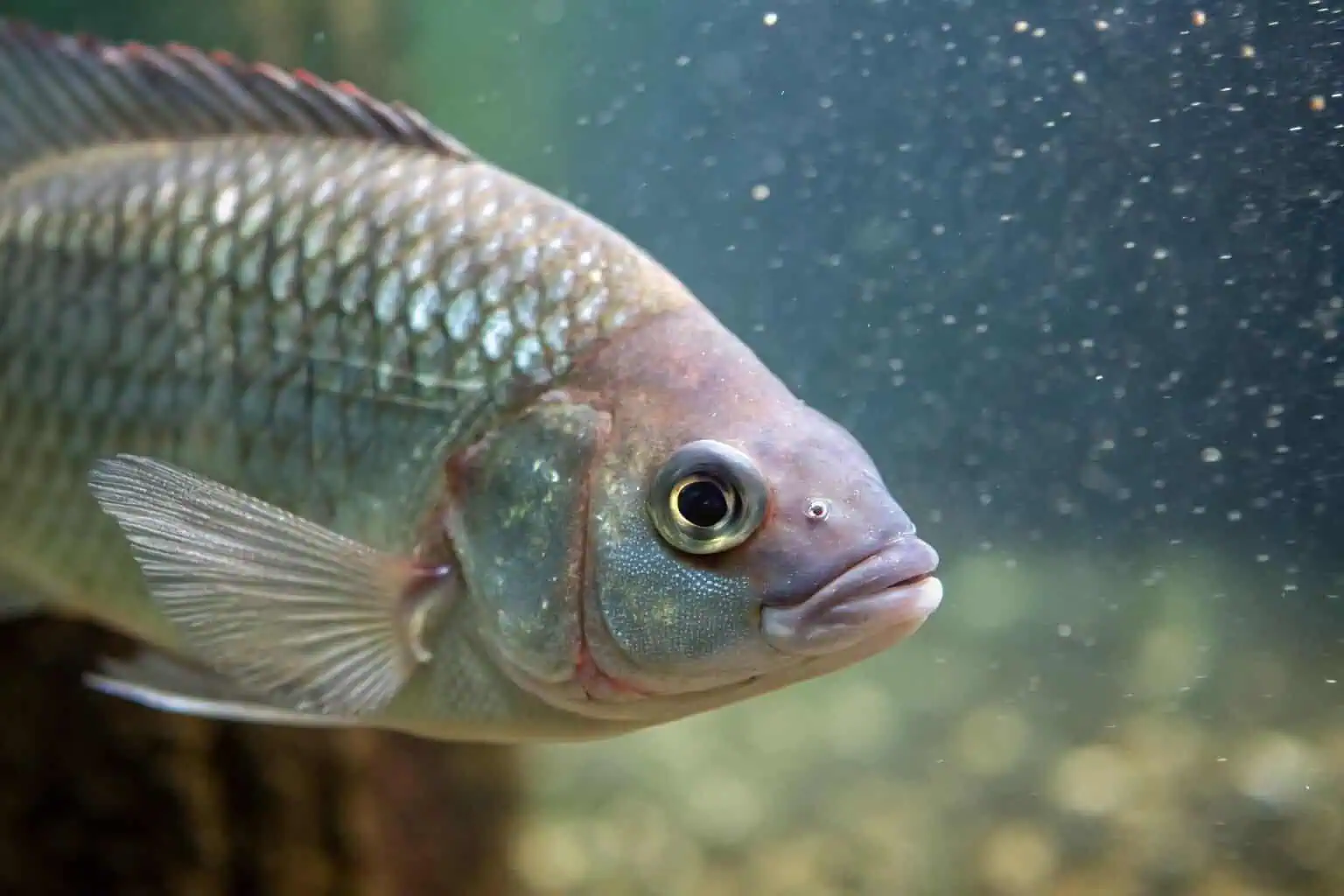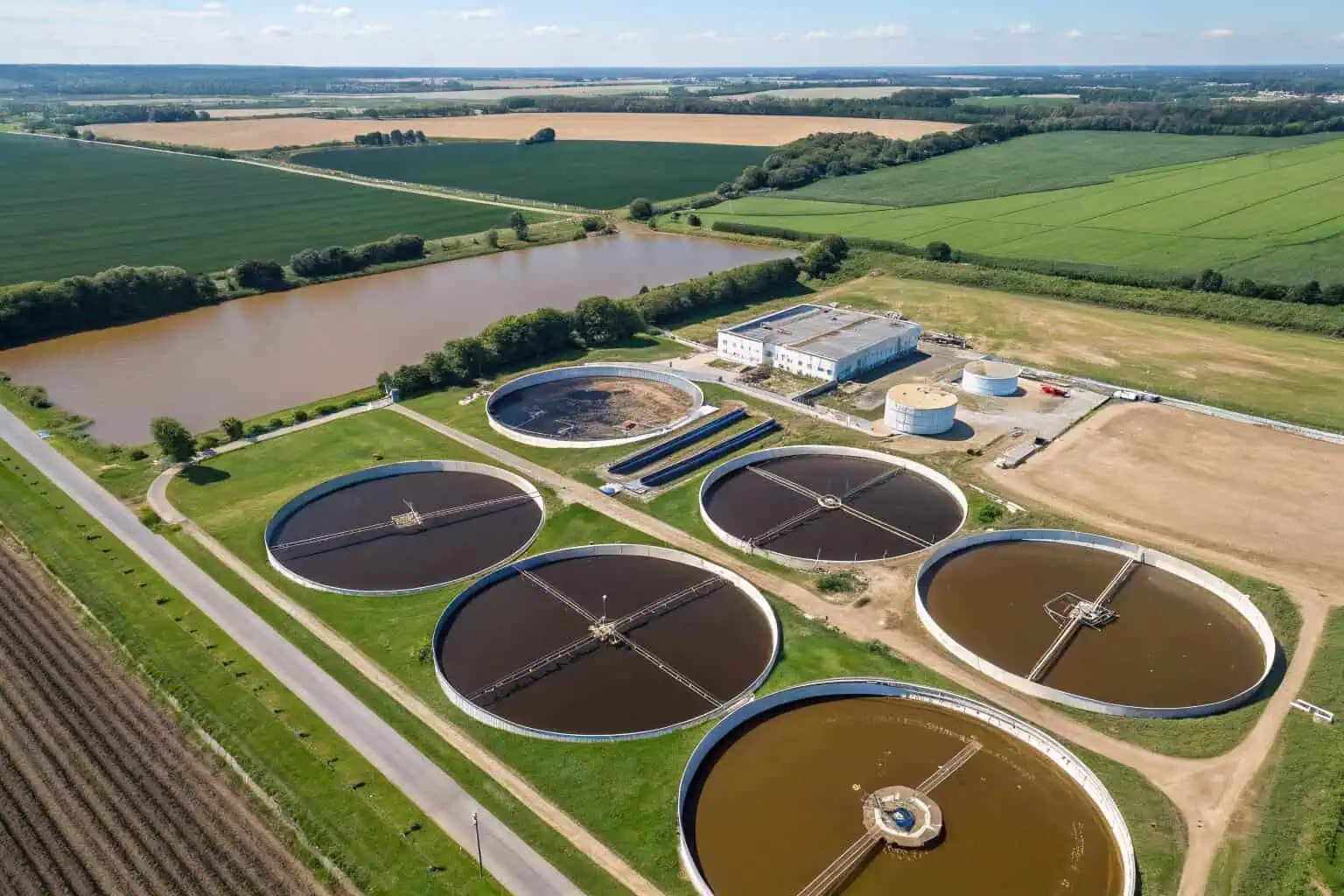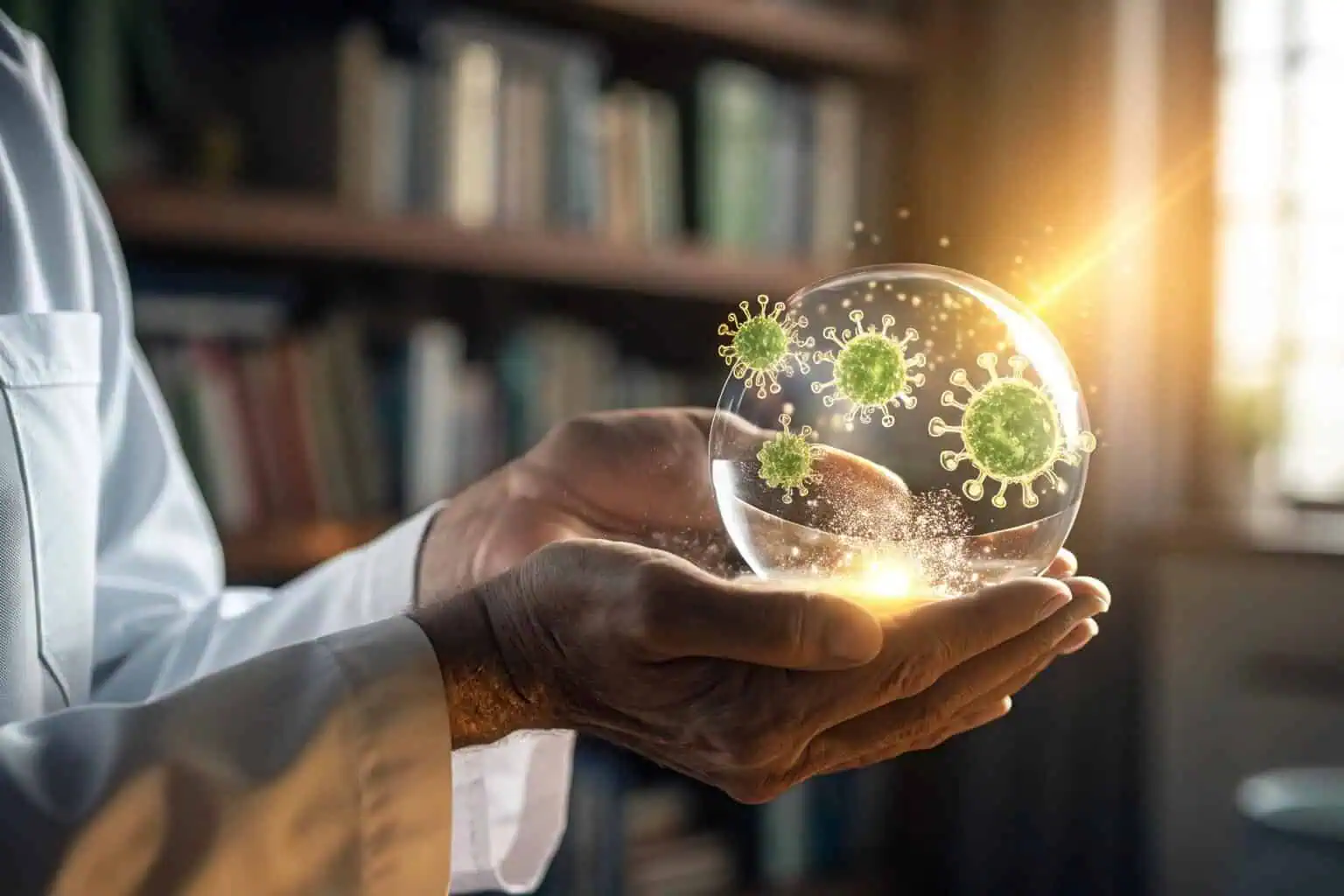Which Fish Breeds Are Best Suited for Biofloc Fish Farming?
Choosing the right fish for your biofloc system can feel overwhelming. Making the wrong choice can lead to wasted time, money, and effort, ultimately jeopardizing your farm's success.
Tilapia and shrimp are top choices for biofloc farming. They are hardy, grow fast, and adapt well to the high-density, microbial-rich environment, making them highly efficient and profitable for farmers using this sustainable method.

Now that you know the top picks, you are probably wondering what makes them so special. Understanding the details behind why certain species thrive in a biofloc system is key to maximizing your farm's potential and ensuring a profitable harvest. Let's explore this further.
Which fish is best for biofloc farming?
Are you struggling to pick the single best fish for your biofloc system? The options can be confusing, and this indecision can cause costly delays for your farm.
Tilapia is often considered the best fish for biofloc farming, especially for beginners. Its tolerance for a wide range of water conditions, rapid growth, and acceptance of various feeds make it a reliable choice.

As someone who has worked with various aquaculture systems, I've seen firsthand how tilapia consistently performs well in biofloc environments1. Its resilience gives farmers a greater margin for error, which is invaluable when you're starting out. But it's not the only option. Other species also offer unique advantages that might be a better fit for your specific goals or market demands. It's important to look at the full picture before making a final decision. I believe that a deeper dive into the characteristics of each species will help you see why tilapia is a favorite, but also appreciate other strong contenders.
Why Tilapia Reigns Supreme
I find that tilapia's success in biofloc systems comes down to its hardiness. This fish can handle fluctuations in water quality, like changes in ammonia and nitrite levels, better than many other species. It also has a varied diet and can consume the biofloc particles directly, which lowers my feed costs. This ability to turn microbial protein into growth is a huge economic advantage2. Their fast growth cycle means I can get them to market size quicker, improving my farm's turnover and profitability.
Other Strong Contenders
While tilapia is a star, you shouldn't overlook other species. Pacific White Shrimp3 (Litopenaeus vannamei) are another excellent choice, especially because they are bottom-dwellers and naturally thrive in a floc-rich environment. They are highly profitable due to strong market demand. Catfish also work well, as they are tough and can tolerate lower oxygen levels. For me, the choice often depends on the local market. Sometimes, a species like catfish might fetch a higher price than tilapia, making it a more profitable option despite slightly different management needs.
Comparison of Top Biofloc Species
To make it clearer, I've put together a simple table to compare these options.
| Feature | Tilapia | Shrimp (Vannamei) | Catfish |
|---|---|---|---|
| Hardiness | Very High | High | High |
| Growth Rate | Fast | Fast | Medium-Fast |
| Floc Consumption | Good | Excellent | Moderate |
| Market Demand4 | High | Very High | Regionally High |
| Management5 | Easy | Moderate | Easy |
What is the most profitable type of fish farming?
Are you looking to maximize your farm's profits but feel unsure which method to choose? Sticking with traditional farming can mean high costs and low yields, which hurts your earnings.
Biofloc fish farming is one of the most profitable methods available. By recycling nutrients and reducing water exchange, it cuts feed and operational costs, while high stocking densities boost overall yield and revenue.

From my experience, the shift to biofloc is a game-changer for profitability. I've seen my own operational costs drop significantly, mainly because I'm not spending as much on commercial feed or water. The system essentially creates a self-sustaining ecosystem6 where fish get a constant supply of protein-rich food from the microbial floc. This not only saves money but also improves the health and growth rate of the fish. The ability to raise more fish in a smaller area is another huge plus. It means I can produce more with less land and water, which directly translates to higher profits.
The Economic Edge of Biofloc
I believe the main economic advantage of biofloc is its efficiency. In traditional ponds, a large portion of feed is wasted and turns into toxic ammonia. In a biofloc system, this "waste" is converted into food. This cycle reduces the Feed Conversion Ratio (FCR)7, which is a major expense in aquaculture. I also save a lot on water and pumping costs because water exchange is minimal. Furthermore, the high stocking density allowed by the stable water quality means my production per square meter is much higher than in conventional ponds. This intensive production model is what makes the return on investment so attractive.
Comparing Profitability Across Systems
When I compare biofloc to other systems, its financial benefits become even more apparent. Recirculating Aquaculture Systems (RAS)8 are also intensive but come with very high initial investment and energy costs for complex filtration. Traditional pond culture has lower setup costs but is far less productive and has higher feed and water management expenses. Biofloc strikes a balance, offering high productivity without the extreme costs of RAS. It represents a more accessible path to profitable, intensive aquaculture for many farmers.
Profitability at a Glance
Here is a simplified comparison to illustrate the point.
| System | Initial Investment | Operational Cost | Profit Margin |
|---|---|---|---|
| Biofloc9 | Moderate | Low-Moderate | High |
| RAS | Very High | High | Moderate-High |
| Pond Culture10 | Low | High | Low |
Who is the father of biofloc?
Are you curious about the origins of this amazing technology? Not knowing the history can leave you without context, making it harder to appreciate the science behind your farm's success.
Dr. Yoram Avnimelech, an Israeli scientist, is widely seen as the "father of biofloc technology." His research in the 1990s laid the foundation for using microbial flocs to treat water in aquaculture.

When I first learned about biofloc, understanding its origins helped me grasp the core concepts much better. Dr. Avnimelech wasn't just trying to grow fish; he was trying to solve a fundamental problem in aquaculture: waste management11. His work showed that we could turn a problem (ammonia from fish waste) into a solution (a nutrient-rich food source). This shift in perspective is what makes biofloc so revolutionary. It’s not just a method; it’s a different way of thinking about the relationship between water, waste, and life in a closed system. His contributions have paved the way for the sustainable and profitable farming methods we use today.
The Pioneer's Vision
Dr. Avnimelech's work was driven by the need for more sustainable aquaculture, particularly in a water-scarce country like Israel. He saw that the traditional "flow-through" systems, which constantly replace water, were incredibly wasteful. His vision was to create a closed-loop system12 that mimicked natural aquatic environments, where microbial communities actively manage water quality. He focused on manipulating the carbon-to-nitrogen ratio13 in the water to encourage the growth of beneficial bacteria. These bacteria then consume ammonia, converting it into microbial protein, or "floc," which the fish can eat. This was a radical idea at the time, but it worked.
How the Technology Evolved
After Dr. Avnimelech published his initial findings, researchers and farmers around the world began to build on his work. The technology evolved from small-scale lab experiments to large commercial operations. Early challenges included maintaining the right microbial balance14 and ensuring adequate aeration for high-density populations. Over the years, innovations in aeration systems15, system design, and monitoring techniques have made biofloc more reliable and easier to manage. Today, it's a mature technology used globally to farm shrimp, tilapia, and other species, all thanks to the foundational principles established by its pioneer.
Which fish is preferred most for cultivation?
Wondering which fish is the global favorite for farming? Choosing a less popular species can mean facing limited market demand and lower profits, putting your business at a disadvantage.
Globally, carp and tilapia are among the most cultivated fish species. Their adaptability, fast growth, and widespread consumer acceptance make them staples of aquaculture worldwide, ensuring consistent demand for farmers.

In my journey as a farmer, I've learned that what grows well is only half the battle; you also need to grow what sells. Tilapia and carp are popular for a reason. They are not picky eaters, they grow quickly in a variety of conditions, and most importantly, people all over the world like to eat them. This global demand16 provides a stable market, which is crucial for any farming business. While niche markets for other species exist, the sheer volume and reliability of the carp and tilapia markets make them a safe and smart bet for cultivation, especially at a large scale.
The Global Demand for Farmed Fish
Aquaculture is a massive global industry, and a few key species dominate production. Carp17 has been farmed for centuries, particularly in Asia, and remains a food staple for millions. Tilapia, often called the "aquatic chicken," has seen its popularity explode over the past few decades due to its mild flavor, boneless fillets, and affordable price. These fish are successful because they are easy to farm and easy to sell. Their production chains are well-established, from hatcheries to processing plants, making them accessible to both new and experienced farmers looking to tap into a reliable revenue stream.
Factors Driving Popularity
Several factors make a fish species popular for cultivation. First is biology: it must be hardy and grow fast. Second is economics: the cost of production must be low enough to ensure profitability. Third, and perhaps most important, is consumer preference. People tend to prefer fish with a mild taste and firm texture18. Tilapia and carp fit these criteria perfectly. They are also versatile in the kitchen, which broadens their appeal across different cultures and cuisines. This combination of favorable farming traits and strong market demand is the recipe for a globally preferred fish.
Top 5 Cultivated Fish Globally
Here's a look at some of the world's most farmed fish.
| Rank | Fish Species | Key Reasons for Popularity |
|---|---|---|
| 1 | Carp | Hardy, fast-growing, staple food in Asia |
| 2 | Tilapia19 | Adaptable, mild flavor, affordable |
| 3 | Salmon20 | High market value, popular in Western markets |
| 4 | Catfish | Tolerant of poor water, strong regional demand |
| 5 | Shrimp | Highly profitable, global demand |
Conclusion
In short, choosing the right fish like tilapia for biofloc farming is key. This profitable, sustainable method, pioneered by Dr. Avnimelech, is changing aquaculture for the better.
-
Understanding biofloc environments can enhance your aquaculture practices and help you choose the right species for your system. ↩
-
This link will help you understand the financial benefits of tilapia farming, enhancing your knowledge of aquaculture economics. ↩
-
Discover the advantages of Pacific White Shrimp in aquaculture, including their profitability and environmental adaptability. ↩
-
Understanding market demand can help you make informed decisions about aquaculture investments and sales strategies. ↩
-
Exploring management practices can enhance your farming efficiency and sustainability, ensuring better yields. ↩
-
Understanding this concept can help you appreciate the efficiency and sustainability of aquaculture systems like biofloc. ↩
-
Understanding FCR is crucial for optimizing aquaculture efficiency and reducing costs. Explore this link to learn more about its significance. ↩
-
Understanding RAS can help you compare its costs and benefits with biofloc systems, enhancing your aquaculture knowledge. ↩
-
Exploring this resource will provide insights into the advantages of Biofloc systems, enhancing your understanding of aquaculture options. ↩
-
Discover the common issues faced in Pond Culture, which can help you make informed decisions in aquaculture practices. ↩
-
This resource will provide insights into effective waste management strategies in aquaculture, crucial for sustainable fish farming. ↩
-
Understanding closed-loop systems can provide insights into efficient resource management and ecological balance in aquaculture. ↩
-
Learning about the carbon-to-nitrogen ratio can help optimize fish farming practices and improve water quality management. ↩
-
Discover the significance of microbial balance in aquaculture and how it impacts the success of farming operations. ↩
-
Learn about aeration systems and their crucial role in maintaining healthy aquatic environments for farming species like shrimp and tilapia. ↩
-
Learn how global demand shapes fish farming markets, ensuring profitability and sustainability for farmers. ↩
-
Discover the historical significance and evolution of Carp farming in Asia, a staple food source for millions. ↩
-
Exploring this preference can provide insights into culinary trends and fish selection for restaurants and markets. ↩
-
Explore the advantages of Tilapia farming, including its adaptability and mild flavor, which make it a popular choice worldwide. ↩
-
Discover the reasons behind Salmon's high market value and its popularity in Western cuisine, making it a key fish species. ↩